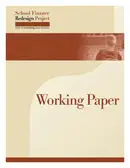Analysts have long argued that salary schedules in public education have pernicious effects on who ends up teaching. By paying teachers based only on experience and degrees, school districts make teaching a relatively unattractive occupation for people with technical skills or academic ability. Because such skills are rewarded outside of teaching, the “brightest” college students tend to avoid teaching (if they teach, they’re more likely to leave), and science and math teachers are in short supply. These are worrisome trends given that some research suggests these are the very same people who might be more effective at raising student achievement.
One logical response to this problem is to offer incentives for high achievers and people with technical skills to become teachers. In the late 1990s, for example, Massachusetts famously offered “high quality candidates” $20,000 signing bonuses. Other states have been more modest, offering math and science teachers less than $2,000 extra. Today, incentive policies are touted by experts in Congressional hearings on the renewal of No Child Left Behind. The logic of these policies is straightforward. But deciding exactly where to set the incentive amount (i.e., should it be $20,000, or $2,000?) is not.
This paper offers empirical evidence on the size of incentives that might be needed to make teaching a relatively more attractive occupation for people with technical skills or high academic aptitude. It relies on data from the U.S. Department of Education’s Baccalaureate and Beyond Longitudinal Study. These data include information on a cohort of college graduates at three points in time: when they first entered the workforce in 1994, three years later, in 1997, and ten years after graduation in 2003. By comparing what people with different characteristics earn as teachers and as non-teachers, we estimate the wage gap that an incentive policy would have to bridge in order to make teaching more attractive.







